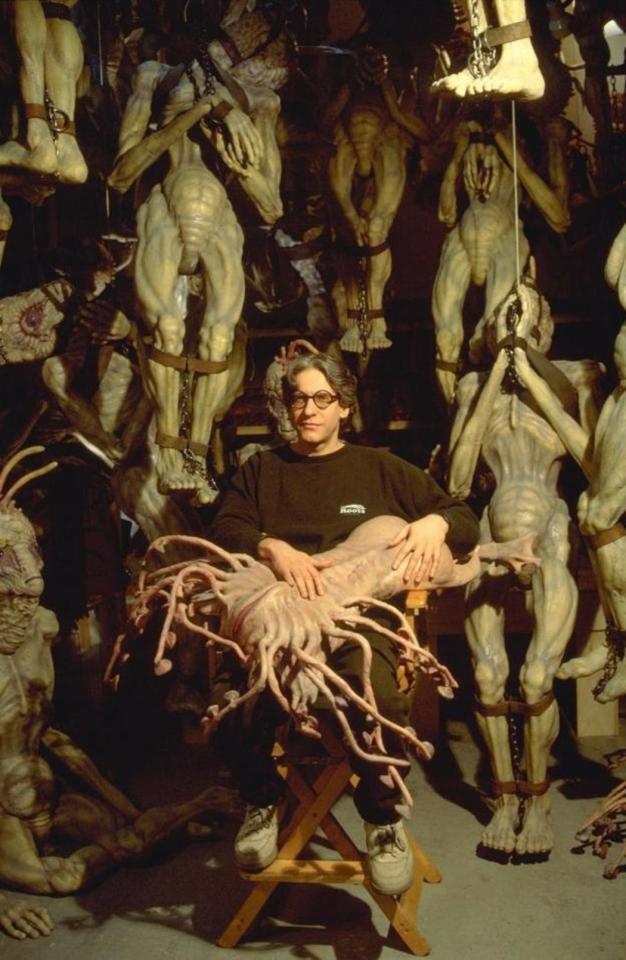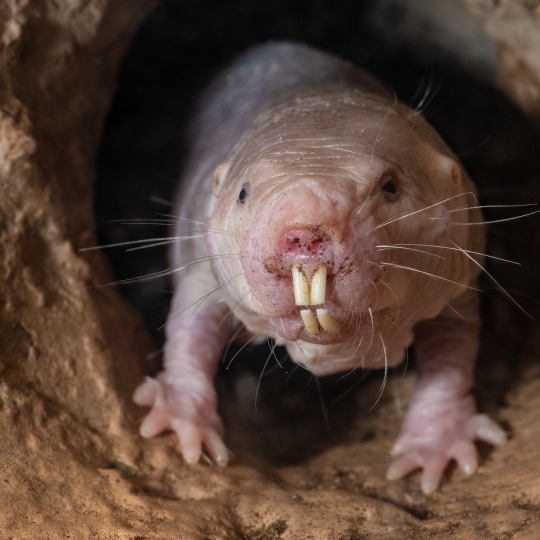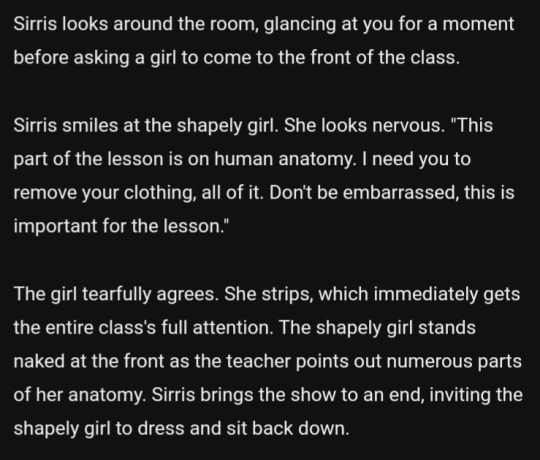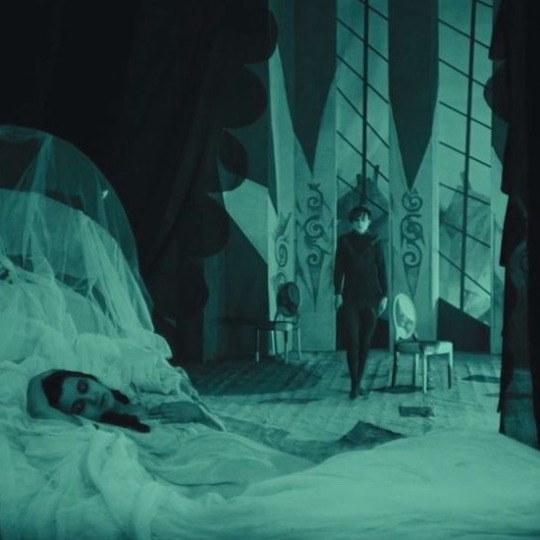#Naked Science
Explore tagged Tumblr posts
Text

Naked Science (2004) Super Volcano
S1E2
Yellowstone, Wyoming. In spring 2003, strange things began happening in America's most famous national park. The tallest geyser in the world, which can go 50 years without erupting, burst into life. Spraying columns of superheated water, 100s of feet into the air. There were new cracks in the ground, the ground heated up to the point where the National Park Service had to close some trails. Not long after, a group of bison collapsed and died, victims of poisonous fumes from below the ground. Satellite pictures revealed that something ominous was happening beneath the earth. On the internet, unfounded rumours spread that a super volcano, an eruption so large, that it only occurs on average every 700,000 years, was about to blow. These things happen, you can look at the earth and see the scars. They happen, and they're going to happen again.
A million times more powerful than Hiroshima, super volcanoes are real events. Over 20 have been recorded in the history of the earth and over half of these happened in the USA. For the last 30 years scientists have been investigating where the next super volcano could erupt. Their research has revealed that an active super volcano exists under Yellowstone National Park. Naked Science follows these scientists and investigates the vital question, if the Yellowstone Caldera erupted today, could we survive? This documentary includes a Yellowstone timeline of past eruptions, how Yellowstone would affect the world, and what impact will it be for the United States.
#Naked Science#2004#S1E2#tv series#documentary series#documentary#Super Volcano#Volcano#Yellowstone#Yellowstone caldera#timeline#eruptions#history#geology#volcanoes#just watched
0 notes
Text





Heavy is tired of medics shit. Medic is unbelievably hard.
Suggestion from @liquidyinsect and heavily inspired by the ever amazing and extremely talented @dailyheavymedic (this in particular)
#heavy has seen medic work a million times and has some experience with gunshots so it just makes sense that he knows what to do#medic has experiments to run#on heavy#how does he get him to do that again but also being naked?#a man of science always finds a way#my art#art#tf2#team fortress 2#comic#heavymedic#red oktoberfest#tf2 medic#tf2 heavy#heavy x medic#cw blood
2K notes
·
View notes
Text

David Cronenberg on the set of Naked Lunch.
#david cronenberg#william s burroughs#naked lunch#sci-fi#science fiction#beat generation#weird#halloween
10K notes
·
View notes
Text

Cuddle up to the naked mole rat (Heterocephalus glaber)! Native to parts of eastern Africa, including Kenya and Ethiopia, these rodents inhabit underground burrows. They typically live in colonies of around 70 individuals—but they've been spotted in groups that near 300! To keep warm, they huddle together for body heat, often seeking out tunnels that lie close to the surface and are heated by the Sun. Did you know? Naked mole rats have the longest lifespans of all rodents, sometimes living for up to 30 years!
Photo: Josh More, CC BY-NC-ND 2.0, flickr
#science#nature#natural history#animals#mole rat#did you know#fact of the day#cool animals#naked mole rat#rodentia#rodents
493 notes
·
View notes
Text
This pic of david cronenberg is so cunty


#horror#horror movies#horror classics#david cronenberg#the fly#naked lunch#movies#movie director#behind the scenes#me in my room#he's so me#scifi#sci fi movies#science fiction
962 notes
·
View notes
Text
In a groundbreaking endeavor, researchers at the University of Rochester have successfully transferred a longevity gene from naked mole rats to mice, resulting in improved health and an extension of the mouse's lifespan. Naked mole rats, known for their long lifespans and exceptional resistance to age-related diseases, have long captured the attention of the scientific community. By introducing a specific gene responsible for enhanced cellular repair and protection into mice, the Rochester researchers have opened exciting possibilities for unlocking the secrets of aging and extending human lifespan. "Our study provides a proof of principle that unique longevity mechanisms that evolved in long-lived mammalian species can be exported to improve the lifespans of other mammals," says Vera Gorbunova, the Doris Johns Cherry Professor of biology and medicine at Rochester.
Continue Reading
275 notes
·
View notes
Text
Animal of the Day!
Naked Mole-rat (Heterocephalus glaber)

(Photo from WIRED)
Conservation Status- Least Concern
Habitat- Eastern Africa
Size (Weight/Length)- 40 g; 7 cm
Diet- Roots; Tubers
Cool Facts- Being more closely related to guinea pigs and porcupines, the naked mole-rat may be naked but it is neither a mole or a rat. They are the only cold-blooded mammals in the world and have highly complex, female-led societies. Being one of the only eusocial mammals, naked mole-rats have a bee-like society with only the queen breeding and all the rest being sterile workers. Only a few chosen non-related males are allowed to breed with the queen, their relationship lasting up to a decade. Naked mole-rats have the longest lifespan of any rodent of up to 37 years thanks to their resistance to cancer and long term heart health. Due to their lack of external ears and tiny eyes, naked mole-rats are virtually blind and never leave their burrows. When searching for food, they dig for large tubers that can feed the colony for years.
Rating- 13/10 (The first animal photographed for The Photo Ark.)
Requested by @looopylooop
#animal of the day#animals#mammals#rodents#monday#september 4#naked mole rat#biology#science#conservation#the more you know
218 notes
·
View notes
Text
Soooo... Are we gonna talk about Sirris being embarrassed by seeing the PC naked but not anyone else? 👀


Their reaction to the PC, as opposed to the screenshot below where they have zero problem asking this poor girl to strip 👀

What's up with that, Sirris? 👀
(Psst!!! Notice how they also first glance at the PC before asking the other student!!! Did they have an internal debate about who they actually want to ask? 👀)
#please god let us fuck them im begging#p l e a s e#also like i've never gotten a scene where they ask the PC to strip fully from the start? it's always just down to underwear#at the MOST#while with random students it varies between clothed or just underwear or straight up naked#sirris the science teacher#degrees of lewdity sirris#dol sirris#degrees of lewdity#cyra attempts to speculate
256 notes
·
View notes
Text

Action!
#action#retrowave#science fiction#sci fi horror#beautiful#aesthetic#retro aesthetic#futurewave#moviegifs#vhs#movies#cinema#scifi#retro scifi#scifi girl#scifiart#scifiedit#sci fi#sci fi movies#cyberpunk#cyberpunk aesthetic#cyberpunk art#futuristic#cyberpunk girl#cyberpunk city#naked beauty#nude art#nude pose#nude photos#nudemodel
74 notes
·
View notes
Text

Naked Science (2004) What Is Human?
S1E10
What do you need to compete with the fiercest predators on Earth, to tame fire, to make tools, to survive cataclysmic natural disasters, and ultimately turn yourself from being an ape like creature, into human being? Uncovering the secrets of the dead, we're looking back millions of years. This is the story of our battle to survive. Our species nearly became extinct. The struggle that eventually propelled one animal to rise above all other creatures on Earth. This is our story, the story of what makes us, human.
Evolution, what is human? In the beginning there were amoebas. Then there were fish and then there were walking, air-breathing fish. Then there were apes and then, well, me and you. At some point along the vast evolutionary scale a change occurred, a genetic mutation was born giving rise to a new species, the first 'human'. The problem is when? As we travel the globe in search of our earliest ancestor, the first animal we can say is undeniably not an ape, but in fact one of 'us'.
#Naked Science#tv series#2004#What is human?#S1E10#ancestors#human beings#evolution#simulation#fossils#science#natural history#documentary series#documentary#just watched
0 notes
Note
Oooh can we have 10 with colonel brandon and Marianne please?
Good choice for them! It's very romantic. Which then made me think of Marianne wanting to be kissed on every spot on her body, in every manner, so she could decide which is the most romantic kiss. And now you have this:
10. A kiss along the jawline
"And what about here?" Brandon pushed Marianne's curls off the side of her face and slowly pressed his mouth to her jaw, with soft, parted lips, watching her face as he did so. Her eyelids fluttered closed with a contented sigh, and she smiled as he let his gentle kisses roam up and down the short length of bone.
"Lovely," she murmured. "Sensual. The tension of having you so close to my mouth, yet not on my mouth, makes for a very agreeable sensation." She ran her fingers through his hair and opened her eyes to smile warmly at him. "And the intimacy of having you so close and being able to look into your eyes adds to the romance."
"What if I do it like this?" He leaned in as though he was going to kiss her jaw again, but instead he bit it softly, making her cry out in surprise. He immediately soothed over it with his tongue, then laid another worshipful kiss on top. He lifted his head to look at her, his eyes heavy-lidded.
"Exquisite," she breathed. "Exciting. That may be one of the best so far."
He smiled. "Then I shall give you more of them."
Written for the kiss ask game. Keep 'em coming!
Read all of these kiss fic snippets at the tag #kiss snippet. Read all of my stuff at the tag #my writing.
#i'm picturing them laying in bed naked together having a lazy day experimenting with kisses#and in the interest of completeness she has to kiss him on the bits that she doesn't have herself#you know for science#oh crap this is turning into a whole fic in my head...#answers#snippets#my writing#fanfic#jane austen#jaff#sense and sensibility#marianne x brandon#marianne dashwood#colonel brandon#my stuff#kissing#sexy times#kiss snippet
12 notes
·
View notes
Note
We’d all like the rest of your butterfly facts, please.
I have SO MANY; I'm not even sure how to share them all.
Butterflies and moths are not taxonomic or cladistic groups; they're colloquial terms to refer to lepidoptera (the taxonomic order butterflies and moths belong to) that have different characteristics and behaviors. That said:
Moths tend to be nocturnal
Moths tend to have fuzzy bodies, butterflies are sleek
Moths tend to have fuzzy antennae, butterflies just have straight plain ones
The additional fuzz on months allows them to sense what's around them, which is helpful because they're not seeing as much because they're nocturnal
Moths tend to build chrysalises with silk but also leaves and mud, etc. These are known as cocoons. Butterflies only use silk and don't have cocoons (either are known as chrysalis)
The Atlas Moth has the biggest wingspan of any lepidoptera
The Atlas Moth usually emerges from its cocoon without a mouth. It can only breed and die
The Atlas Moth caterpillar lives for months. It's generally in the cocoon for months! But it only lives as an adult moth for a few days (because it can't even eat!)
Inside their chrysalises, caterpillars don't just grow wings and longer legs. They liquify completely and reform.
Caterpillars have six legs called "true legs" that mirror the six legs butterflies have. Then they have additional nubs farther down their bodies that help them move around.
Butterflies taste with their feet. If they land on you, they're tasting you!
Butterflies can only eat liquid. They primarily eat nectar and juice from fruit. Rotten fruit is easier for them because rotten fruit is juicy.
The butterfly mouth is called a proboscis. It curls up when not in use and uncurls when the butterfly eats. It's like a straw.
The word "proboscis" can sometimes refer (as a joke!) to nose, but butterflies can't smell with their proboscis. They smell with their antennae!
Like many insects, butterflies have faceted eyes. But unlike the movies, they probably don't see the same image over and over, because their vision isn't refined enough for that. What faceted eyes allow them to see are big patches of color, which is useful considering they eat fruit and flowers. If you want a butterfly to land on you, wear something colorful.
Butterflies don't have lungs. Like most insects, they breathe through holes in their bodies called spiracles.
Incidentally, this is why insects are so small. If they were giant, these holes would have to be bigger or there would have to be many more of them, and that would mean their exoskeleton was not stable!
Oh, yeah, butterflies do not have bones. Like all insects, they have an exoskeleton.
Butterflies do not have blood. Like all insects, they had a fluid that moves most nutrients through their bodies. It's called hemalymph. It carries hormones, nutrients, and waste. It's blue!
Male butterflies tend to be smaller and more colorful than female butterflies. This is the same style of sexual dimorphism present in most insects. Also in birds!
Male monarch butterflies have distinctive dark spots on the lower wings that female monarch butterflies don't have. The spots are scent glands that help them attract mates.
Most butterflies migrate. Like birds.
Monarch butterflies in North America east of the Rocky Mountains have one of the most impressive migration patterns of any animal. They may travel up to 3,000 miles from Canada to Mexico, but what is most spectacular about it is that almost all of them end up in just a few spots relatively close together on some mountain peaks in Central Mexico. The monarchs are so dense that you can't see the trees.
Butterflies are great for studying evolutionary adaptations in coloration and appearance because they are so striking. Camouflage is the adaptation present when an animal blends in with its surroundings. Mimicry is the adaptation that makes an animal look like a different animal.
The owl butterfly is a great example of mimicry because it has two big owl eyes on its wings. The Atlas moth wing tips look like snake heads.
"Batesian mimicry" is named after Henry Walter Bates, who studied mimicry in butterflies. Batesian mimicry means that one species who is harmless looks like another species that is not harmless. Mullerian mimicry is when several species that are harmful all look like each other, so the warning to predators is stronger. Butterflies have great examples of both types of mimicry.
Monarch butterflies and viceroy butterflies were once thought to exhibit Batesian mimicry, because it was thought that vicroys weren't toxic, but it turns out both butterflies are poisonous and so the species have evolved to mimic each other in an example of Mullerian mimicry.
Monarch butterflies are poisonous because the milkweed caterpillars eat is poisonous
The best way to attract butterflies is to grow native plants.
#butterflies#i actually have lots more facts about how butterfly houses work#i also have a lot of random science knowledge that is accessible and interesting to the public!!!!#ask about these subjects#whales in general#whale evolution#naked mole rats#the physics of sound#microorganisms#tide pools#stars#nutrition#ocean acidification#planets#liquid nitrogen#bubbles#blowing things up#snakes#volcanoes#dinosaurs#climate change#long post
49 notes
·
View notes
Text
Why tf is it that my playlist is just “meh” whenever I’m at work, but that exact same playlist deadass turns into 🔥🔥🔥 the instant I get home and start working out???
#science side of tumblr#help a brutha out#a post about me#maybe its bc i can get buck naked at home and dance and sing my ass off at home? 🤔#does the music change or do i ??#¯\_(ツ)_/¯
11 notes
·
View notes
Text

the the the girls

#revolutionary girl utena#rgu#anthy himemiya#utena tenjou#my art#utenanthy#this looks like doodoo but may as well post it#i was going to draw naked women for science and anatomy study but it turned into more yuri#the brainworms strike again
24 notes
·
View notes
Text

Naked Science (2004) Alien Contact
S1E8
Just for a moment, imagine a universe awash with life, where we humans are not the only intelligent beings around. What might these alien races look like? Could we communicate with them, or even recognise them as intelligent? And what would they make of our violent and dangerous species? Might they take one look, and decide not to bother with such primitive beings? A planetary nursery filled with spiteful, galactic infants. On the other hand, in our imaginary scenario, they may enrich us with scientific knowledge beyond our imagination. Or could an encounter with aliens have a more destructive outcome? It could be a bad day for human kind. But relax, it's just make believe, it could never happen, could it? A mysterious crash in Roswell, New Mexico during the 1940s convinced many that our planet is being visited by space aliens. Crop circles in Britain have only added fuel to the fire. Few scientists doubt that life indeed exists elsewhere, but some believe we're more likely to make contact via radio waves. Join the search for extra-terrestrials and hear from scientists who think we are on the verge of making contact.
#Naked Science#2004#tv series#documentary series#Alien Contact#S1E8#aliens#questions#documentary#just watched#flying saucer
1 note
·
View note
Text
jen moodboard!!!
go to pinterest and make yourself a mood board, whatever that means to you.
thank u @pupmotif mwah mwah
i didnt really know what to do so i just made one of what my life looks like currently :~)









im the avarage loser boyfriend from ur favorite cartoon who collects dvds and only ever wears leather vests and chains :/
np tags: @sugarsnappeases @standardlovers @themuseoftheviolets @stillagoodwitch @static-radio-ao3 @itsjaywalkers @divinerapturee @foursaints
#also added my favorite film genres#50s hollywood and 30s german expressionism#sorry to say im a film bro 😞#BUT a film bro with a bacherlors degree in film science#also. i genuinely live almost exactly like the main character from rear window#can never walk around naked 😞
15 notes
·
View notes